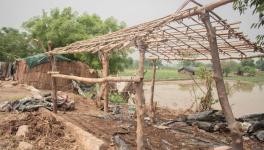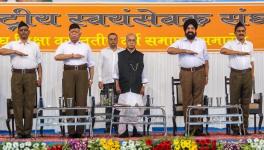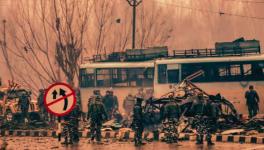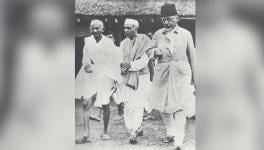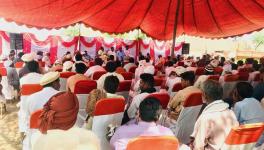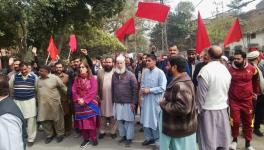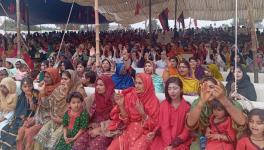A Brief History of Reserved Seats in J&K
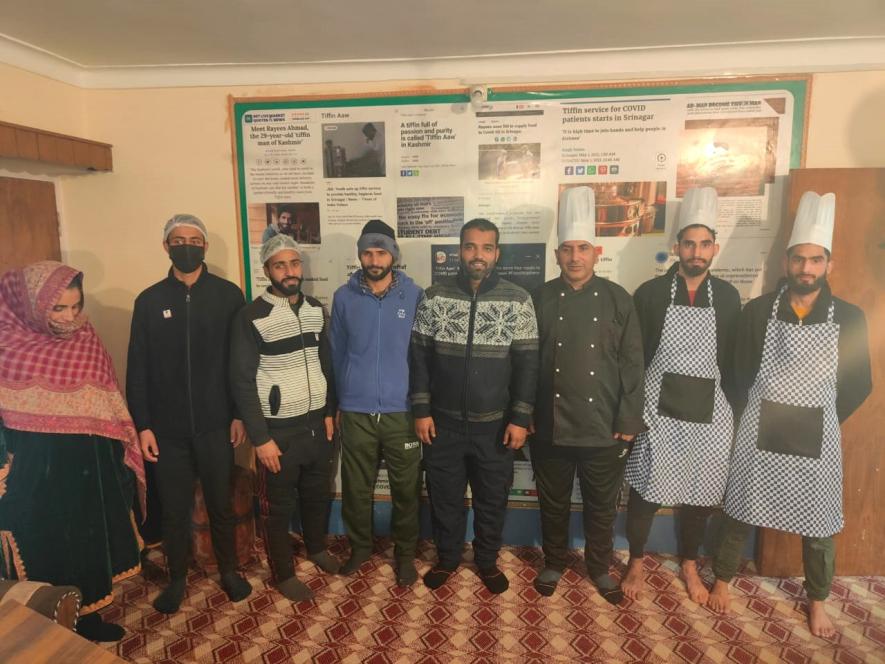
The completion of the Delimitation Commission’s work in Jammu and Kashmir was much awaited, as it is a consequence of developments after 5 August 2019 that radically transformed the constitutional status of the erstwhile state. Apart from the mandated work to delineate the ninety constituencies across J&K, which understandably received a lot of attention, the panel has recommended the provision of at least two seats (including one for a woman) in the Assembly from among Kashmiri migrants. It has also recommended that displaced persons from Pakistan-controlled Kashmir get some representation in the Assembly. There is already provision of electoral reservation with respect to the Schedule Tribes and Schedule Castes in the directly-elected seats in the proposed J&K Assembly.
The recommendations for nominations for migrants raises interesting normative as well as practical questions for students of politics about the broader scope of applicability of the suggestion in terms of the turbulent history of the subcontinent, international humanitarian law, the definition, and finally the rights, of nominated members in the legislative process.
The provision for nominating seats in the legislature is a common practice. Between 1952 and 2020, two seats were reserved in the Lower House of the Parliament of India for members of the Anglo-Indian community. In January 2020, the Anglo-Indian reserved seats in Parliament and State legislatures were discontinued. In the same way, twelve members are nominated in the Upper House of Parliament by the President for their contributions to arts, literature, the sciences, and social services.
In J&K, the practice of nomination existed during the monarchy period. The first J&K Assembly, known as Praja Sabha, was formed during the monarchy in October 1934. It consisted of 75 members, out of which 33 were elected by different communities on a franchise that did not cover more than three percent of the population. The rest were nominated. Even the nullified J&K Constitution had a provision that the Governor “may, if he is of the opinion that women are not adequately represented in the Assembly, nominate not more than two women to be members thereof.”
The recent recommendations for nomination in the J&K Assembly for migrants, however, has its own distinctions. In this context, first of all, the status of migrants from Pakistan-controlled Kashmir requires further probing in the context of the discipline of international humanitarian law. The commission is right in using the term “migrant” in contrast to the “refugees” for the communities displaced from Pakistan-controlled Kashmir in 1947.
In 1947, Pakistan-controlled Kashmir migrants were displaced in an environment of bloodshed on both sides of the Line of Control and the neighbouring Punjab province. While the majority of Muslim displacement was concentrated in and around the Jammu plains and neighbouring western Punjab, (now Pakistan), there was a migration of 31,619 Hindu and Sikh families from various parts of Pakistan-controlled Kashmir as well. Of the latter, 26,319 families ‘opted to settle’ within J&K, with 3,600 families going to urban areas (primarily Jammu, Udhampur and Nowshera), and 21,116 to rural areas. A section of the community took refuge in various parts of the country, including the Pathankot area of the Gurdaspur district in Indian Punjab, the Yol area of the Kangra district of Himachal Pradesh, Agra town in Uttar Pradesh and in the Lajpat Nagar locality in New Delhi.
Like in many Partition-afflicted families in the subcontinent, the first priority was to restore a sense of stability and security in the lives of these displaced communities from Pakistan-controlled Kashmir. However, in the last three decades, as part of greater political consciousness, their descendants have made efforts to carve out their own political space. Unlike migrants from provinces such as present-day Punjab or Sindh in Pakistan, these communities got relief—and not compensation—for the properties they left across the Line of Control. The logic is that as India is committed to get back that region, giving compensation would dilute its claim. These communities were rehabilitated in the 1960s in the western part of Jammu city, the winter capital of J&K, whereas in Delhi, one pocket they were rehabilitated in was the Lajpat Nagar area in South Delhi.
Within J&K, the areas of settlement for these communities was dictated by ethnicity, language, and, possibly, the preferences of the contemporary political elites. The bulk of present-day Pakistan-controlled Kashmir was a part of the Jammu province, which was much more populous than the Kashmir province before 1947. In fact, the bulk of displacement of Hindus and Sikhs in 1947 was intra-provincial. The reality is different for the majority of displaced Muslims, for they settled in neighbouring Pakistani Punjab and not Pakistan-controlled Kashmir. However, even the Hindu and Sikh migrants from the Muzaffarabad district, which in administrative terms was part of Kashmir province before 1947, were not settled in the Kashmir valley, where they had initially moved after violence forced them to leave. They were settled nearly 300 km across the Pir Panjal mountains, in Jammu city, which was culturally and linguistically relatively akin.
While advocating for their rights, the descendants of Pakistan-controlled Kashmir migrants often invoke the term “refugees”. The term requires further understanding in the context of present theoretical framework governing international humanitarian law. The caveat is that various contextual provisions of international humanitarian law are anchored in the World War II experience, with particular reference to Europe. For instance, the United Nations Convention relating to the Status of Refugees adopted on 28 July 1951 is the foundational tenet on the issue of refugees. In the oft-cited Handbook and Guidelines on Procedures and Criteria for Determining Refugee Status under the 1951 Convention and the 1967 Protocol Relating to the Status of Refugees, section 88 says, “It is a general requirement for refugee status that an applicant who has a nationality be outside the country of his nationality. There are no exceptions to this rule. International protection cannot come into play as long as a person is within the territorial jurisdiction of his home country.”
In this context, historical timelines become important. With the end of British rule, the princely ruler, Hari Singh, proposed a standstill agreement to both India and Pakistan. India insisted on prior negotiations with the J&K government, but Singh did not respond to the suggestion. On 15 August 1947, the Government of Pakistan accepted the Jammu and Kashmir State’s offer for a standstill agreement. Late Om Saraf, a veteran journalist and an eyewitness to important phases of this history, once told this writer that on the morning of 15 August 1947, he spotted “Pakistani flags over the offices of the post and telegraph department in J&K”. This was because as per the standstill agreement, the central departments of the State functioning within the Lahore administrative circle were to be under the jurisdiction of Pakistan.
However, the situation changed rapidly in the last quarter of 1947. On 21 October 1947, the princely ruler appointed Bakshi Tek Chand, a retired judge of the Punjab High Court, to frame a Constitution for the Princely State. The infamous raid by Mahsud tribesmen to forcibly capture J&K left no option before the ruler except to accede to India on 26 October 1947. The bulk of migration from Pakistan-controlled Kashmir thus took place after this date. The Indian position is that entire J&K, including Pakistan-controlled Kashmir, became a part of India on account of instrument of accession signed by the princely state. Therefore, implicitly in line with the Indian position, the nationality of Pakistan-controlled Kashmir migrants never changed when they migrated—a necessary condition for the grant of refugee status. At the time of migration in November 1947, they were Indian citizens and that is why anyone who migrated from Pakistan-controlled Kashmir cannot be construed as refugees.
In addition, there is a conundrum in defining who constitutes migrants even from among the
Pakistan-controlled Kashmiri migrants. The youngest person from this category of people, who was born in Pakistan-controlled Kashmir, will be 75 years old. Practically, the beneficiaries of the nomination (to the Assembly) will be the second and third-generation, born in different parts of India. There is also the question of those born to parents, one of whom did not belong to Pakistan-controlled Kashmir while the other did. Obviously, patriarchal model will violate Article 15 of the Indian constitution, which secures citizens from every sort of discrimination by the State on the grounds of gender. Apart from these questions, the issue of ascertaining the number of nominations in the proposed J&K Assembly remains. The Delimitation Commission has not suggested any particular number.
At the time of drafting the J&K Constitution, 100 seats were earmarked for direct elections from territorial constituencies. Of these, 25 were reserved for Pakistan-controlled Kashmir, which later became 24 seats, with a caveat. Section 48 of the nullified J&K Constitution stated, “Notwithstanding anything contained in section 47, until the area of the State under the occupation of Pakistan ceases to be so occupied and the people residing in that area elect their representatives—(a) [24 seats] in the Legislative Assembly shall remain vacant and shall not be taken into account for reckoning the total membership of the Assembly; and (b) the said area shall be excluded in delimiting the territorial Constituencies under Section 47.”
Coming to the suggestion of nominating Kashmiri migrants, the issue is less complex. The migration from Kashmir valley is only 32 years old in contrast to 75 years of migration from Pakistan-controlled Kashmir. Apart from the J&K Legislative Assembly, the Kashmiri Pandit community had been elected in both Houses of Parliament. For instance, late PL Handoo, a National Conference stalwart, won the 1989 election for the Indian Parliament from the Anantnag parliamentary constituency in poll marred by low voting turnout. DP Dhar, who played an important role during Indira Gandhi’s tenure as prime minister, particularly during the 1971-72 Shimla Accord between India and Pakistan, was elected as a member of the Upper House of Parliament in 1972.
Lastly, and more importantly, the legislative rights of nominated members under the two categories in the legislature are not clear. The case of reservation for the Anglo-Indian community in State legislatures under the repealed Article 333 of the Constitution, a ambiguity raised several controversies, particularly in the situation of a vote of no-confidence. The higher courts had to adjudicate on this constitutional issue as the political executive facing a vote of no-confidence instrumentalised the nomination provision to boost its numbers.
The ambiguity can have enormous ramifications in J&K as the race among political parties would become even more competitive after the fresh delimitation. No single party could form a government on its own since 2002 in J&K. Since 2002, regional parties, namely the National Conference (NC) and Peoples Democratic Party (PDP), required the support of other parties to form the government. In 2002, the PDP and in 2009, the NC, formed a coalition with the Congress party to form the government whereas in 2015, the PDP stitched a coalition with the BJP.
While much of the discussion relating to the Delimitation Commission’s work is in the context of the delimited 90 seats, the suggestion of reservation for two different migrant groups, particularly Pakistan-controlled Kashmir, requires a greater understanding of inter-related issues namely the targeted groups, the granular aspects of subcontinental political history, humanitarian law and representative democracy.
The writer is the author of two books on Jammu and Kashmir, including Across the LoC, Columbia University Press, 2012. The views are personal.
Get the latest reports & analysis with people's perspective on Protests, movements & deep analytical videos, discussions of the current affairs in your Telegram app. Subscribe to NewsClick's Telegram channel & get Real-Time updates on stories, as they get published on our website.










